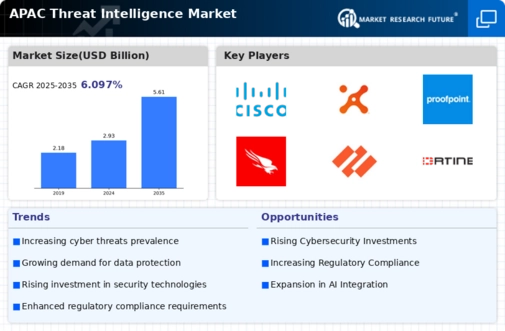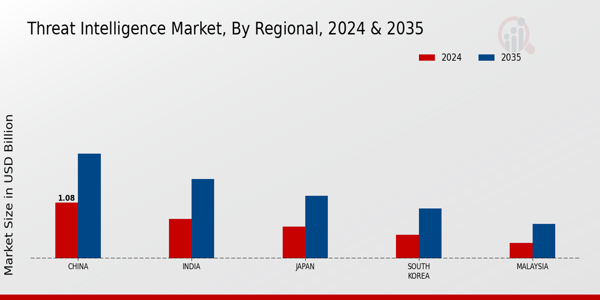The APAC Threat Intelligence Market is characterized by a dynamic competitive landscape that is shaped by the growing prevalence of cyber threats and the increasing need for enhanced security measures among organizations in the region. As cyberattacks become more sophisticated, the demand for threat intelligence solutions has surged, prompting players in the market to innovate and adapt to emerging challenges. The competitive insights within this market reveal a diverse range of companies that provide various products and services aimed at equipping organizations with the necessary tools to detect, respond to, and mitigate cybersecurity risks.
This competitive arena showcases a blend of established industry leaders and emerging startups, each vying for market share by offering unique capabilities and solutions tailored to the specific needs of businesses across the APAC region.
Cisco stands out in the APAC Threat Intelligence Market due to its extensive portfolio of security solutions and a robust global presence. The company's strong reputation is bolstered by its commitment to innovation and technological advancements in cybersecurity. Cisco leverages its expertise in networks and security to deliver comprehensive threat intelligence solutions that integrate seamlessly with its existing infrastructure. In the APAC region, Cisco benefits from a well-established customer base, providing organizations with the confidence that they have a reliable partner in navigating the complexities of cybersecurity threats.
The company's strengths lie in its trusted brand, the breadth of its product offerings, and its proactive approach to threat detection, which collectively contribute to its competitive edge within the market.ThreatConnect is another key player in the APAC Threat Intelligence Market, recognized for its advanced threat intelligence platform that empowers organizations with the insights needed to enhance their security posture. The company specializes in providing a solution that aggregates threat data from multiple sources, enabling businesses to make informed decisions regarding potential threats.
ThreatConnect has established a significant presence in the APAC region, focusing on delivering tailored intelligence solutions to meet the specific requirements of local markets.
The company has a range of key products and services designed to support incident response, threat analysis, and cybersecurity collaboration. Additionally, ThreatConnect has been actively engaged in strategic partnerships and mergers within the region, further solidifying its market standing. Its strengths lie in its innovative approach to threat intelligence, the flexibility of its offerings, and its commitment to enhancing collaboration among security teams, making it a crucial player in the evolving landscape of cybersecurity in APAC.

























Leave a Comment